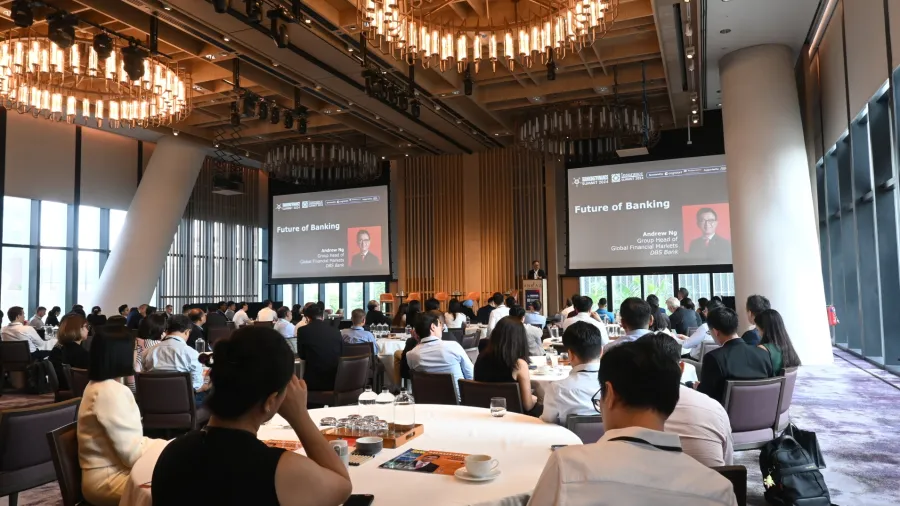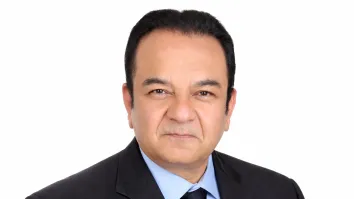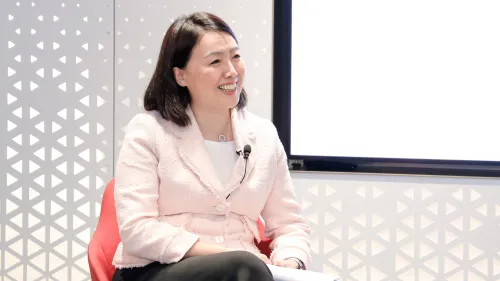
Technology to underpin future of financial services
Banks should boost their online infrastructure as digital assets become the norm.
Embedded finance, automation, and digital assets are likely to drive the future of financial services, top bankers and analysts said at the Asian Banking & Finance and Insurance Asia Summit 2024.
The sector has become segmented, and consumers demand more, Alvin Witirto, associate partner at Bain & Company, told the 242 people who attended the summit at Andaz Singapore on 3 September.
Gen Z and Millennials no longer think branches are relevant and expect to interact digitally. “Everything needs to be as simple as it gets, because that’s what they’re used to when they’re spending 80% of their lives beyond banking,” he said.
“As embedded as you would like to think banking and insurance are, they are fairly invisible today,” Witirto said. “And what is more visible is how you engage with them, and that’s what has shifted.”
Andrew Ng, DBS group head of global financial markets, expects the world to become fully digital in the next few years.
Ng said that there might come a time when fiat currency, which is not pegged to the price of a commodity such as gold or silver, and bank branches will become insignificant to customers’ financial needs — especially when it comes to managing their wealth.
“In the next couple of years, digital assets will grow big time in wealth management,” he said. “So as a bank or institution, you need to prepare your infrastructure for custody and make sure all these coins are clean.”
He said financial regulators, who used to dismiss cryptocurrencies as just another hype, are now working to make private exchanges safe and ensure that there are proper custodians of digital currencies.
“Many central banks are also thinking about issuing digital currencies,” Ng added.
The topic of tech innovations continued on to the first panel, where moderator Shikha Johri, managing director at Alvarez & Marsal, was joined by senior executives from MatchMove, HSBC Life Singapore, Airwallex, Trust Bank, and Alta Group.
Embedded finance and data were key topics, with HSBC Life Singapore CEO Harpreet Bindra noting how insurance is being integrated across core banking operations.
“We see a lot of personal accidents and cancer coverages being integrated with credit cards,” he told panellists Daniel Stuart-Smith, group CFO at MatchMove; Cher Hao Low, head of SME and Growth for Singapore at Airwallex; Sourabh Pareek, head of experience engineering and delivery at Trust Bank; and Willie Chang, chief operating officer and head of exchange at Alta.
“We see a lot of protection propositions being integrated with mortgages,” he added.
Both Low and Pareek noted how customers now demand seamlessness and convenience.
“I look forward to the idea of a digital product that a customer never actually has to see. It just happens automatically. They don’t have to think about it,” Pareek said.
“If I have to buy something, I don’t want to have to take my phone out,” he added. “I’m just hoping that we can get to a future where — and I actually believe we might — we don’t even need to interact with the technology because it’s that seamless.”
‘The best solution’
Keeve Tan, Bank of Singapore managing director for Greater China and North Asia, noted how it is now the job of the bank to bring itself to the client.
Tan recalled how a client from China, had sought advice from his bank on his $500m business. None of his three children wanted to take over the company and preferred that he sold it instead.
“This client of mine said, ‘Keeve, I’d really like to meet you.’ So I brought my team down [to his city],” he told the panel, which was moderated by Surya Dipta, principal at management consulting firm Kearney.
Tan brought investment bankers from Bank of Singapore’s parent company OCBC to help with the $500m deal.
“I asked him, ‘Where is the $500m going?’ He said, ‘To Singapore.’ He also had $23m spread across two other banks. He moved that to us, increasing customer loyalty and satisfaction. We bring the bank to the client, not the other way around,” he added.
Joining Dipta and Tan were Sharad Mohan, head of international personal bank for Singapore at Citi; Rangam Bir, CEO and managing director at AmMetLife Insurance Berhad; and Saurabh Mathur, head of customer experience and digital marketing at Income Insurance Singapore.
Tan and Bir both noted the importance of leadership to bring customer-centricity especially in complex organisations with many silos.
“I’ve been in organisations with extreme silos, but when it’s time to deliver solutions for the customer, those silos need to disappear,” Bir said.
“Customers don’t care about your internal structure; they just want the best solution.”
Tan also stressed the need for culture not just to flow from the top down, but also upward.
“For example, I saw an email trail yesterday about a client having trouble opening a secure channel on our app,” he said. “The relationship manager eventually resolved the issue, but nobody looked into why the client struggled in the first place.”
“As leaders, we need to ask questions like ‘Why did this issue happen?’ and ‘How can we make it better?’ Leadership is key to fostering the right culture,” he added.
Human judgement
Ernst & Young partner Nitin Datta focused on artificial intelligence (AI) and its uses in banking.
He noted that whilst most banks are in the process of adopting AI — particularly generative AI — many don’t have the resources to scale. “When we spoke to these banks, 90% said they wanted dedicated resources for GenAI.”
Datta said humans must decide whether to adopt AI, whilst allaying fears from workers who might be worried about losing their jobs.
“That won’t change for now, at least until AI evolves to a point where certain decisions can be made by machines,” he said. “But for now, human judgement is necessary. This principle helps align employees with the practical implementation of GenAI, making them more comfortable using it.”
Shifting to the insurance sector, Tawishi Singh, vice president of Innovation and Ecosystem at Singlife, said they have had to innovate externally and from within.
Innovation involves not just new products, new segments, and new partnerships, but also doing it in a way that employees can fully embrace it, she said.
Singlife had a challenge where employees could submit problems on the job that they wanted to fix. Forty of these went through several changes to develop solutions, Singh said.


















 Advertise
Advertise




